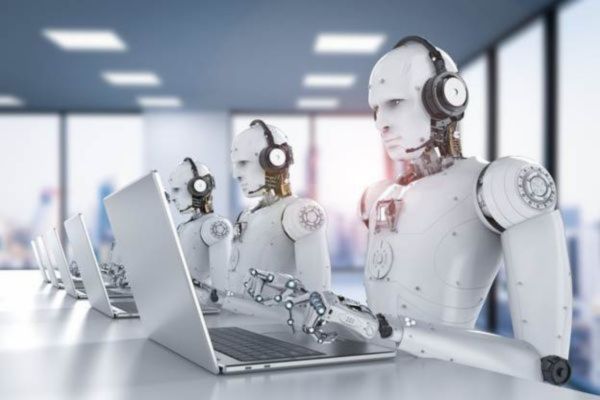In the past decade, the conversation around robotics has shifted from speculative fiction to everyday reality. Robots today aren’t just confined to research labs or factory floors; they have become an integral part of several sectors, including logistics, healthcare, and urban management.
A class of robots that is becoming commonplace across various industries and applications is service robots. But what exactly are service robots? And what is it about these robots that is driving their high adoption? Continue reading as we deliver into the fascinating realm of service robots, covering their basics, working, benefits, and applications. Also, we shed light on the top companies offering service robots to businesses globally.
What Are Service Robots?
Service robots, as their name implies, are robots designed to assist humans. These robots take over tasks that are repetitive, time-consuming, and potentially injury-inducing for humans. They are typically considered for use outside of a manufacturing facility within a professional setting. Service robots can free up human workers for more complex and cognitive tasks.
The increasing labor shortages and rising labor costs have prompted several businesses to adopt robotic solutions. According to the latest research report, the service robotics market is poised to reach USD 167.88 billion by 2034, exhibiting a CAGR of 12.3% during 2025–2034.
Working of Service Robots Explained
Service robots work by leveraging a combination of advanced technologies. Many service robots work autonomously without human supervision, though they do have the option for human workers to offer manual direction and instructions. Semi-autonomous service robots rely on human support to perform new tasks. Here’s a look at the technologies behind service robots’ capabilities.
Sensors: Service robots employ various sensors like cameras, LiDAR, and ultrasonic sensors to collect information about their surroundings.
Artificial Intelligence (AI) and Simultaneous Localization and Mapping (SLAM): Service robots use AI, often with SLAM technology, to process sensor data, map environments, and determine their position.
Autonomous Navigation: Based on the collected and processed information, service robots can navigate autonomously, avoiding obstacles and following predefined routes or paths.
Robotic Arms and Grippers: Some service robots come equipped with robotic arms and grippers for manipulating objects or performing tasks that need physical interaction.
Human-Robot Interaction: Some robots are designed for human interaction, receiving instructions, providing information, or offering entertainment.
How Are Service Robots Used in Different Industries?
Service robots are used by businesses and organizations in various ways. Here are some of the various applications of these robots:
Healthcare: Hospitals and other healthcare facilities employ service robots for cleaning and disinfection. Commonly referred to as disinfection or sterilization robots, these robots typically come in two variants: ultraviolet (UV) sterilization robots and solution-based robots. Along with cleaning and disinfection, service robots assist with patient care tasks like dispensing machines and lifting and transporting patients. Some service robots can also provide emotional support.
Retail: Several retailers use service robots to improve the in-store shopping experiences for consumers. These robots also assist retailers with streamlining operations by taking over tasks like cleaning, product retrieval, and inventory management.
Logistics: Logistics providers are increasingly using service robots to meet the rising demand for goods and address labor shortages. These robots assist with tasks like transporting goods, warehouse management, and delivery.
Hotels: Service robots are being used in hotels globally to enhance and personalize the customer experience. AI-powered kiosks greet guests upon arrival, while service robots can carry guests and luggage to their rooms. That way, the check-in process becomes more seamless and efficient.
Restaurants and Food Services: The food service industry is also benefiting from service robots. These robots can take orders via apps, prepare beverages like coffee, serve them, and finalize bills.
Advantages of Using Service Robots
There are several benefits associated with the use of service robots. Some of them include:
Increased Efficiency and Productivity: As mentioned earlier, service robots can automate several repetitive tasks. This frees human employees to focus on higher-level activities. Also, service robots don’t experience fatigue like human workers, meaning they can work 24/7 without breaks. This leads to enhanced output and reduced turnaround times.
Consistency and Quality: Service robots maintain a consistent level of performance, unlike human workers. This translates to improved work quality and better customer service.
Safety and Reduced Risk: Service robots can operate in hazardous environments, which reduces the risk of injury to human workers. These robots can also be used for tasks like material handling and disinfection, further improving safety.
Enhanced Customer Experience: Service robots can improve customer experience by offering faster and more convenient responses. The ability of these robots to handle inquiries and offer assistance can lead to happier customers and improve overall customer satisfaction.
Cost Savings: Service robots do need an initial investment. However, they can lead to long-term cost savings by reducing labor costs, minimizing errors, and enhancing efficiency.
Who Are Major Service Robot Providers?
The market for service robots is dominated by a few key players. These companies leverage advanced technologies and advanced distribution networks to maintain their leading share in the market. Also, they adopt strategic developments like partnerships and collaborations to improve their market presence.
The market also has regional players focusing on cost-effective solutions to capitalize on opportunities in emerging markets. The competitive landscape is characterized by continuous research & development and a growing emphasis on sustainable solutions.
A few of the key market players are:
- FANUC Corporation
- KUKA AG
- DJI
- Northrop Grumman Corporation
- Neato Robotics
- Ubtech Robotics
- GeckoSystems International Corporation
- SoftBank Robotics
- iRobot Corporation
To Sum It Up
To conclude, service robots are increasingly playing a crucial role in transforming the service industry globally. These robots help businesses free up their employees to focus on other high-level tasks and ensure the best customer experience. The future holds immense potential for these robots across several industries worldwide.

















